Step into the ancient town of Nain, where biblical miracles unfold and history whispers secrets of faith and renewal.
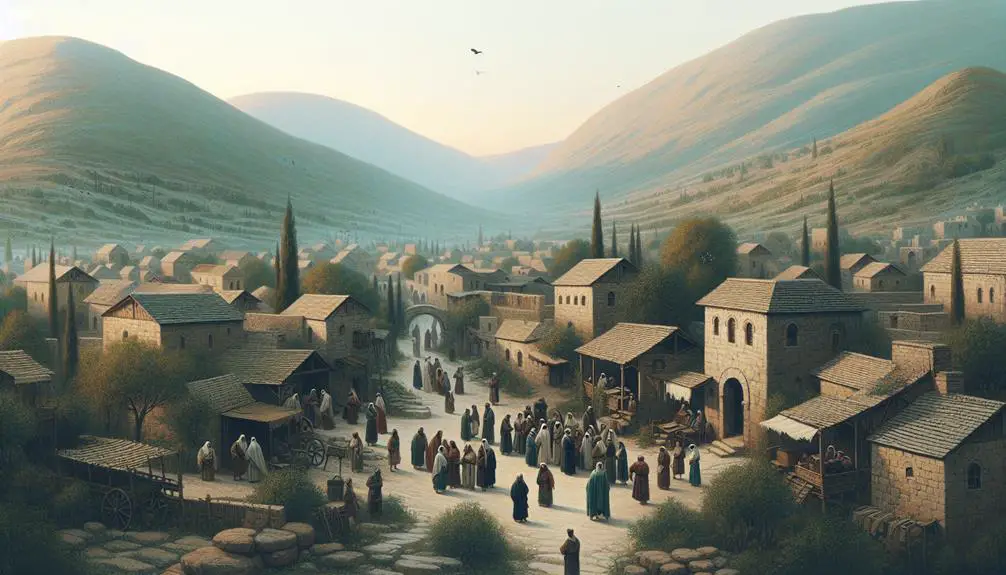
Town of Nain in the Bible
Have you ever pondered the significance of small towns in grand narratives? Nestled in the narratives of the Bible, the town of Nain serves as more than just a dot on ancient maps; it's a testament to the profound interactions between the divine and the mundane.
As you explore its geographical location, historical context, and the remarkable miracle that took place within its boundaries, you'll uncover layers of cultural and spiritual significance. But the story of Nain doesn't end with ancient texts. Its evolution into the modern era and the reflections it inspires on themes of renewal invite you to engage further, sparking curiosity about how such a seemingly inconsequential place continues to resonate through history.
Key Takeaways
- Nain's location in the Lower Galilee and its Mediterranean climate significantly influenced its ancient agricultural practices and trade.
- The town is noted in the New Testament for Jesus Christ's miracle, symbolizing divine power and faith.
- Archaeological discoveries in Nain deepen understanding of its biblical history and the lives of its ancient inhabitants.
- The miracle at Nain has fostered community unity, resilience, and spiritual rebirth, impacting cultural expressions and traditions.
Geographic Location

Situated in the Lower Galilee region, Nain is a town that holds significant historical and biblical importance. Its location isn't just a testament to its historical and religious significance but also plays a key role in understanding its climate patterns and its position on ancient trade routes.
Analyzing its geography, you'll find that Nain benefits from a Mediterranean climate, characterized by hot, dry summers and cool, wet winters. This climate pattern has historically influenced the agricultural practices and settlement patterns in and around Nain. The predictable weather patterns provided a stable environment for ancient communities to thrive, making it an attractive location for settlement since ancient times.
Furthermore, Nain's proximity to significant trade routes can't be understated. Located in the fertile Lower Galilee region, it sat near ancient pathways that connected the larger trade networks of the Mediterranean with the inner regions of the Middle East. This strategic positioning meant that Nain wasn't only a recipient of goods from diverse regions but also played a crucial role in the dissemination of cultural and technological innovations throughout the ancient world. It served as a crossroads where ideas, goods, and cultures could mingle, contributing to the rich tapestry of its historical narrative.
Historical Context
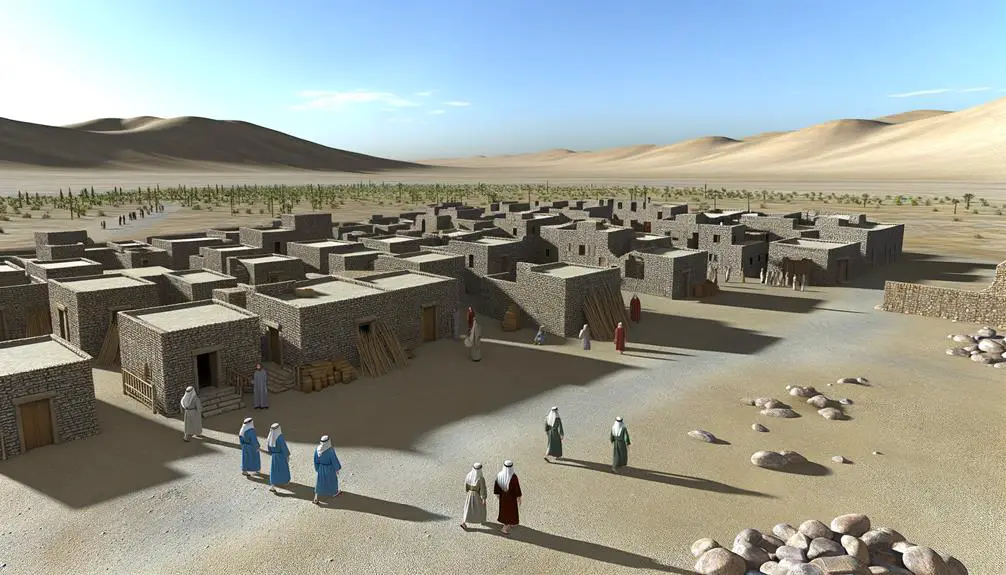
You'll find that Nain's geographic location played a crucial role in its biblical significance, as referenced in the scriptures. Its mention in the New Testament highlights its importance in early Christian narratives, particularly in the miracle of raising a widow's son.
Moreover, archaeological discoveries in the area have shed light on the town's historical and cultural context, offering tangible evidence of its past.
Nain's Geographic Location
Nain, a town mentioned in biblical accounts, nestles in the southern part of the Lower Galilee, near the Hill of Moreh. Its geographical positioning plays a significant role in defining Nain's climate, which is typically Mediterranean, characterized by hot, dry summers and mild, wet winters. This climate influences the agricultural activities and lifestyle of its inhabitants.
Surrounding towns, including Shunem and Endor, contribute to Nain's historical and cultural context, offering insights into the interconnectedness of these communities in ancient times. The proximity to significant geographical landmarks, such as the Hill of Moreh, not only situates Nain within a unique topographical setting but also embeds it within a network of towns with shared cultural and historical narratives.
Biblical Significance
In the heart of biblical narratives, the town of Nain emerges as a poignant setting for one of Jesus Christ's most compassionate miracles, underscoring its spiritual and historical significance within the Christian tradition.
This event, the raising of a widow's son, isn't just a testament to Christ's divine power but also serves as a rich emblem of prophetic symbolism. It echoes the Old Testament miracles performed by prophets Elijah and Elisha, intertwining Nain's story with layers of religious practices and beliefs.
This integration highlights the continuity of divine intervention across the scriptures, reinforcing the town's place within a broader tapestry of faith and redemption. Through this lens, Nain's biblical moment transcends its historical context, offering insights into the evolving nature of religious practices and the enduring impact of prophetic symbolism.
Archaeological Discoveries
Turning our focus to the tangible aspect of Nain's story, archaeological findings have begun to shed light on the town's historical context and its role in biblical narratives. Advanced excavation methods have enabled researchers to unearth structures and items that speak volumes about the lifestyle and beliefs of its ancient inhabitants. Artifact preservation efforts ensure these discoveries remain for future generations to study and appreciate.
Here are key insights:
- Excavation methods have evolved to minimize damage to potential historical sites, allowing a more accurate reconstruction of Nain's past.
- Artifact preservation techniques have become crucial in maintaining the integrity of finds, offering a window into the daily life and spiritual practices of the community.
- These efforts collectively deepen our understanding of Nain's significance in biblical history, bridging the gap between past and present.
The Miracle at Nain

In the biblical account of Nain, you encounter a narrative where Jesus displays profound compassion towards a widow by restoring her only son to life (Luke 7:11-17). This act not only underscores Jesus' empathetic nature but also serves as a pivotal moment that significantly impacts the surrounding crowd.
You'll see that their astonished reaction highlights the deep cultural and religious implications of such a miracle, fostering a broader understanding of its significance.
Jesus' Compassionate Act
Jesus' compassionate act at Nain, where he resurrected a widow's only son, underscores a profound demonstration of empathy and divine intervention within the biblical narrative. This event isn't just a testament to Jesus' power but embodies significant teachings:
- Compassion examples: Jesus' intervention illustrates an unparalleled example of compassion, emphasizing the importance of empathy towards those in despair.
- Miracle significance: The act serves as a pivotal miracle, showcasing Jesus' authority over life and death, reinforcing faith among believers.
- Emotional resonance: The miracle resonates deeply with audiences, highlighting the human aspect of divine interventions—where sorrow is met with hope and mourning turns into joy.
This analytical view invites you to ponder the depth of compassion and the multifaceted significance of miracles in biblical accounts.
Widow's Only Son Restored
Reflecting on the profound compassion demonstrated by Jesus at Nain, it's essential to examine the pivotal moment when he restored a widow's only son to life.
This act goes beyond a mere display of miraculous power; it delves deeply into the cultural and societal norms of the time. Mourning practices in ancient Jewish society weren't just expressions of grief; they symbolized the community's collective loss. For a widow, the death of her only son significantly impacted her social status, plunging her into vulnerability and economic hardship.
Jesus' intervention, therefore, wasn't only a restoration of life but also a restoration of social standing and security within the community. This act underscores the multifaceted nature of compassion, addressing both immediate and systemic societal issues.
Crowd's Astonished Reaction
Upon witnessing the miraculous revival of the widow's son at Nain, the crowd's reaction was a mixture of astonishment and profound reverence, showcasing the impact of this divine act on the community's collective psyche.
The societal norms and emotional dynamics of the time played a critical role in shaping the crowd's response:
- Shock and Awe: The immediate reaction was one of sheer surprise, challenging their understanding of life and death.
- Reverence for the Divine: Recognizing the act as a divine intervention, the crowd's reverence towards the figure responsible intensified.
- Community Solidarity: The miracle fostered a sense of unity and solidarity within the community, reinforcing societal bonds.
This event not only altered the widow's life but also left an indelible mark on the town's collective memory, illustrating the profound interplay between societal norms and emotional dynamics.
Cultural Significance
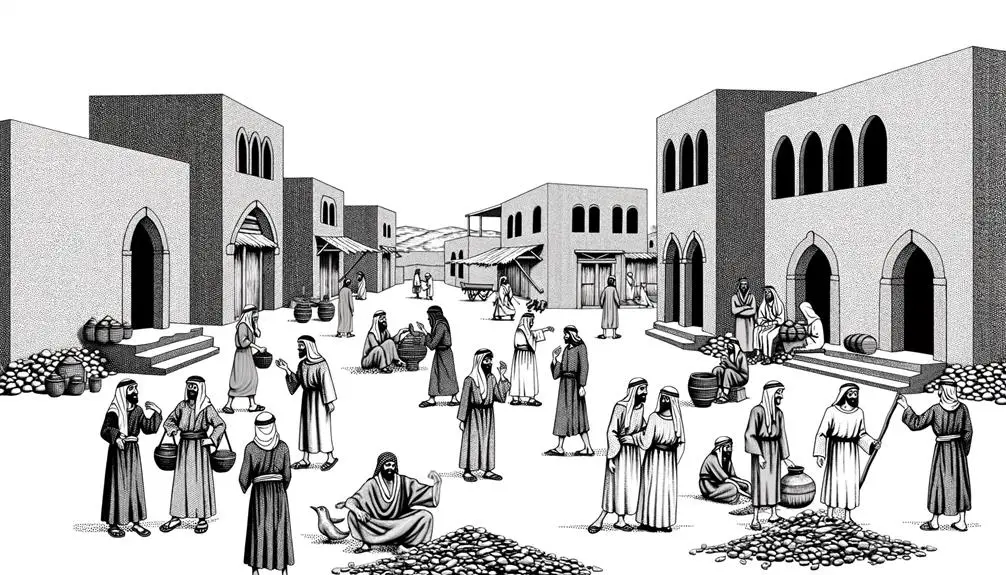
Considering its biblical narrative, the town of Nain holds profound cultural significance, shaping religious and community traditions for centuries. Its mention in the Scriptures, particularly in the context of Jesus raising a widow's son from the dead, hasn't only imbued Nain with a spiritual aura but also influenced local festivals and community practices deeply rooted in this event. You'll find that the town's identity is tightly interwoven with this biblical story, serving as a cornerstone for various cultural expressions and gatherings.
Local festivals in Nain often echo themes of renewal, hope, and community solidarity, mirroring the biblical account's essence. These events aren't just mere commemorations; they're vibrant expressions of faith and collective memory that bind the community. They serve as a living testament to the town's storied past, blending historical reverence with contemporary celebration. The impact of the biblical narrative on these festivals is palpable, as it shapes their rhythm, rituals, and the stories they tell.
Moreover, community practices in Nain are steeped in the values depicted in the biblical account. Acts of kindness, support for the bereaved, and communal gatherings reflect the narrative's influence on how residents interact and support each other. These practices underscore a culture of empathy and solidarity, reinforcing the town's historical and spiritual legacy.
In essence, the biblical narrative hasn't only marked Nain as a site of historical and religious interest but has also enriched its cultural fabric. Through local festivals and community practices, the town continues to celebrate its unique heritage, making the ancient story a living, breathing part of its identity.
Archaeological Findings
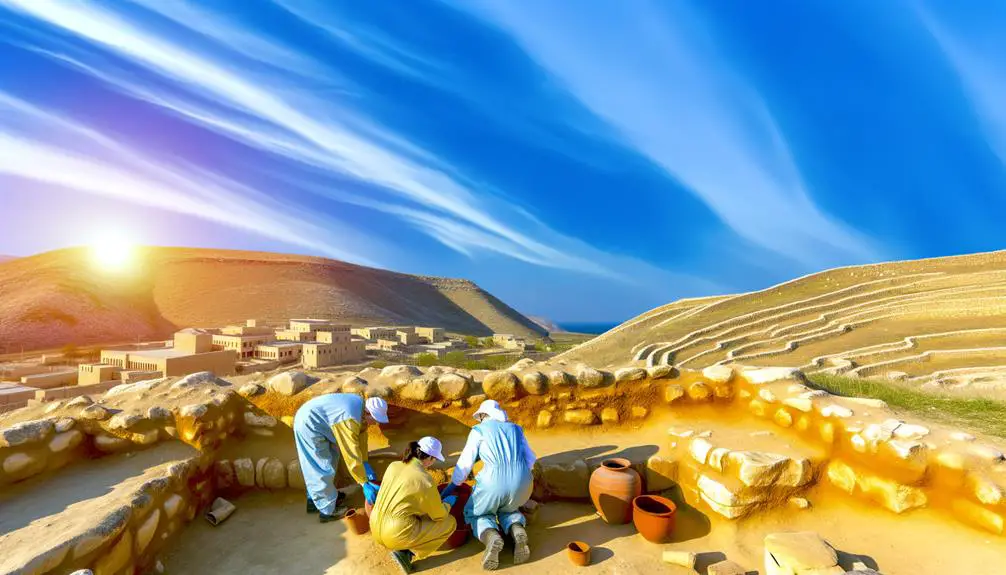
Archaeological excavations in Nain have uncovered artifacts that offer insight into the town's ancient past and its biblical connections. Utilizing modern excavation techniques, archaeologists have meticulously worked to unearth and preserve remnants of this historically rich site. You might find it intriguing how these findings not only illuminate the daily lives of people who lived thousands of years ago but also provide tangible connections to narratives found within the Bible.
The use of cutting-edge excavation techniques has been instrumental in revealing the layers of history buried beneath Nain. These methods ensure that the integrity of the site is maintained, allowing for a more accurate interpretation of the past. Artifact preservation plays a crucial role in this process. Once items are excavated, they undergo meticulous cleaning, cataloging, and analysis to ensure they survive for future generations to study and appreciate.
Here are three emotional impacts these archaeological findings have on audiences:
- Wonder: Uncovering items that haven't been seen by human eyes for millennia sparks a sense of wonder and curiosity about the lives of those who once inhabited Nain.
- Connection: The artifacts serve as a physical bridge to the past, creating a tangible connection between modern individuals and ancient peoples, highlighting the continuity of human history.
- Appreciation: Learning about the sophisticated techniques used in both excavation and preservation fosters a deeper appreciation for the efforts made by archaeologists to protect our shared heritage.
Through rigorous scientific analysis and dedication to preserving history, the archaeological findings in Nain offer a unique lens through which to view the ancient world, enriching our understanding of biblical narratives and the everyday lives of the people who lived them.
Nain in Scriptures
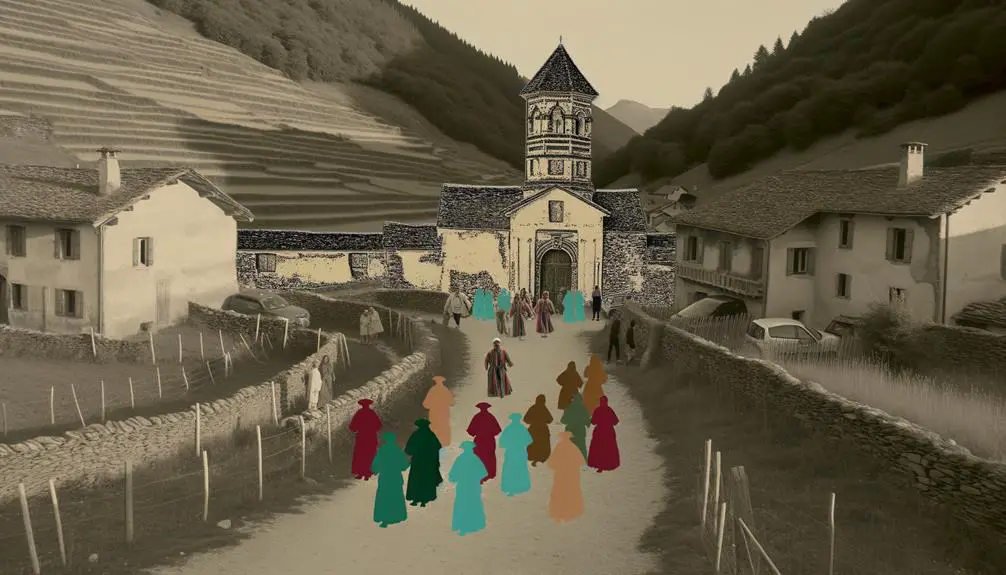
How does the town of Nain feature in biblical narratives, and what significance does it hold in these ancient texts? Nain is notably mentioned in the Gospel of Luke (7:11-17), where it's the setting for one of Jesus' most compassionate miracles—the raising of a widow's son. This event isn't just a display of Jesus' power over death but is rich in scriptural interpretations and bears significant prophetic implications.
In the context of scriptural narratives, Nain symbolizes a place of profound transformation and hope. This miracle is one of the few where Jesus raises the dead, highlighting the theme of life triumphing over death. Scholars often interpret this as a foreshadowing of Jesus' own resurrection, reinforcing the Christian belief in the victory of life over death. Additionally, the act of compassion towards a widow underscores Jesus' message of care for the marginalized and suffering.
The prophetic implications of this event are equally compelling. In the Hebrew Scriptures, prophets like Elijah and Elisha performed similar miracles, raising children from the dead (1 Kings 17:17-24, 2 Kings 4:32-37). Jesus' miracle in Nain draws a direct parallel to these prophets, positioning him within a prophetic tradition that validates his messianic claims to his followers and skeptics alike.
Therefore, Nain's mention in the scriptures isn't merely a geographical detail. It serves as a backdrop for a pivotal narrative that enriches our understanding of Jesus' ministry, emphasizing themes of compassion, resurrection, and prophetic fulfillment. Through this lens, Nain transitions from a mere location to a testament of hope and renewal within the biblical tradition.
Modern Day Nain

Today's Nain, maintaining its historical and spiritual significance, offers a tangible connection to the biblical narratives that once unfolded within its boundaries. This ancient town, now a quiet locale in modern-day Israel, has seen a considerable transformation, driven by its historical allure and the stories that echo from its past. The impact of tourism and the resulting economic development are pivotal to understanding its contemporary relevance.
The tourism impact on Nain can be analyzed through several lenses:
- Cultural Preservation: Visitors come seeking a deeper understanding of biblical events, contributing to the preservation of Nain's historical sites. This interest fuels efforts to maintain and protect these landmarks, ensuring they endure for future generations.
- Economic Growth: Increased tourism has spurred economic development in Nain. Local businesses, from souvenir shops to restaurants, thrive on the influx of visitors. This economic boost is vital for the community, providing jobs and enhancing the quality of life for its residents.
- Global Connection: Tourism fosters a unique global connection. People from all corners of the world converge in Nain, drawn by its biblical significance. This interaction promotes a sense of unity, bridging cultural and religious divides.
In an objective analysis, it's clear that the modern-day dynamics of Nain are intricately linked with its biblical heritage. Tourism, serving as both a catalyst for economic development and a bridge to the past, plays a crucial role in shaping its present and future. This symbiotic relationship between history and progress underscores the enduring significance of Nain in the contemporary world.
Reflections on Renewal
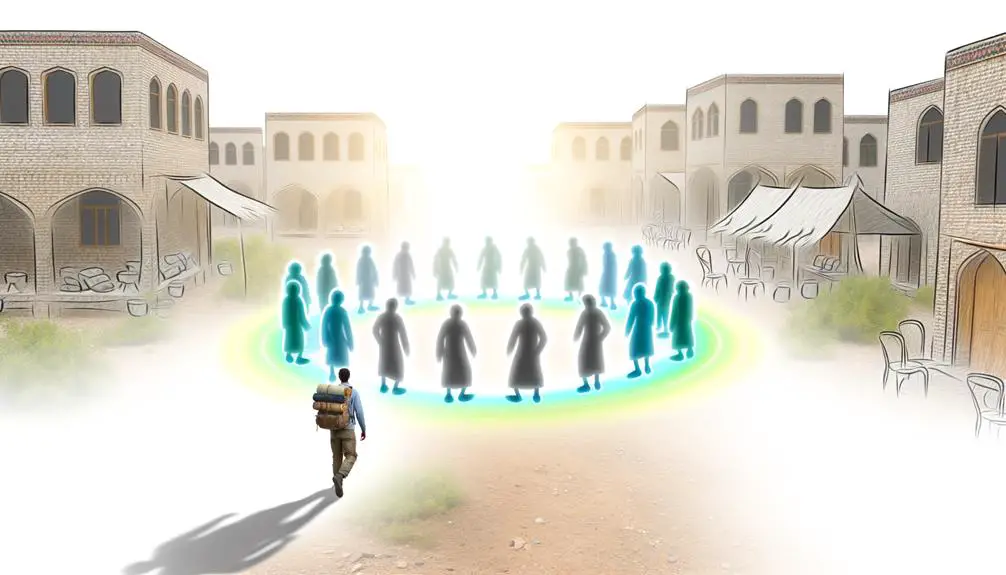
Reflecting on Nain's journey, it's evident that the town has undergone a significant transformation, reveling in a period of renewal that links its storied past with a vibrant future. This period of renewal isn't just a physical or economic rejuvenation; it's deeply rooted in spiritual rebirth and community healing.
As you delve deeper, you'll see how these elements intertwine to foster a holistic transformation.
Spiritual rebirth in Nain isn't merely about religious revival; it's about rekindling a sense of hope and purpose among its inhabitants. Historical accounts suggest that the town's biblical significance, particularly the miracle of raising a widow's son, has long been a source of spiritual inspiration. Today, this legacy continues to inspire both residents and visitors, reminding everyone of the power of faith and resilience.
Community healing, on the other hand, is visible in the strengthened bonds among Nain's residents. In the past, economic hardships and social challenges may have strained these relationships. However, the town's collective efforts towards renewal have paved the way for reconciliation and unity. Initiatives aimed at improving living conditions, preserving cultural heritage, and promoting social welfare haven't only enhanced the town's physical landscape but also healed communal rifts.
Analyzing these developments, it's clear that Nain's journey towards renewal is a testament to the enduring spirit of its people. The intertwining of spiritual rebirth and community healing hasn't only revitalized the town but also set a compelling example of how historical towns can navigate their path towards a renewed identity and future.
Frequently Asked Questions
What Religious Practices or Denominations Are Currently Prevalent in the Town of Nain, and How Do They Relate to the Town's Biblical Importance?
You'll find religious diversity in Nain, reflecting its historical significance. Predominantly, it's inhabited by Christians and Muslims, each practicing their faiths in a town celebrated for its biblical relevance.
This mix enriches Nain's cultural and religious landscape, allowing for a unique blend of traditions and beliefs. The presence of these denominations underscores the town's enduring spiritual importance, drawing visitors and scholars keen on exploring its deep-rooted religious heritage.
How Has the Portrayal of Nain in Various Forms of Art and Literature Over the Centuries Influenced Public Perception of This Biblical Site?
Ever wondered how artistic interpretations and literary adaptations shape your view of historical sites?
Over centuries, Nain's depiction in art and literature has significantly influenced public perception. These portrayals, ranging from paintings to novels, not only highlight its historical and cultural importance but also enhance its mystical allure.
Are There Any Annual Events or Festivals in Nain That Commemorate Its Biblical History, Especially the Miracle Performed by Jesus?
You're probably wondering if there are special events in Nain celebrating its historical significance.
While festival logistics can be complex, modern commemorations do take place. These events aim to honor the rich history of the area, blending traditional observances with contemporary celebrations.
They're not just about looking back but also connecting with the community and visitors. Through these annual festivals, Nain's historical and cultural legacy is kept alive and shared with new generations.
How Does the Climate and Natural Environment of Nain Compare Today to What It Might Have Been Like in Biblical Times?
Today, Nain's climate and natural environment might differ from biblical times due to geological changes and shifts in agricultural practices. You'd find that geological activities have altered landscapes, possibly affecting local climate patterns.
Additionally, modern agricultural practices have transformed land use, potentially impacting the natural vegetation and biodiversity compared to historical times. These changes suggest a significant evolution in Nain's environment from what it might've been millennia ago.
What Are the Economic Activities or Industries That Support the Modern-Day Residents of Nain, and How Have These Influenced the Town's Development Over Time?
You're probably wondering about the main economic drivers in Nain today.
Well, agricultural advancements have significantly boosted the local economy, providing jobs and improving living standards.
Moreover, the impact of tourism can't be overlooked. It's brought a new dimension to Nain's development, attracting visitors eager to explore its rich history and natural beauty.
These industries have collectively shaped the town's growth, making it more vibrant and sustainable than ever.
Conclusion
So, after diving deep into the dusty annals of history and sifting through the sands of time, you've now traversed the biblical back alleys of Nain.
Who knew a place famed for its divine stop-and-revive moment could still stir up intrigue millennia later?
From miracles that outshine your average street magic to archaeological digs less boring than your average history class, Nain's tale is a testament to the fact that even ancient zip codes can deliver timeless drama.
Keep your sandals ready; history has a knack for resurrection.



Sign up